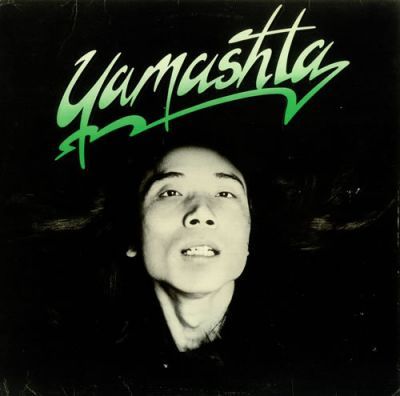Stone-playing Zen master gives rare Paris concerts

He turned his back on the music business in the 1970s to practice Zen Buddhism, but a very special stone lured renowned Japanese percussionist Stomu Yamashta back into melody-making.
Today he is one of the rare musicians in the world playing the enchanting sanukite stone, which he first discovered in 1985 through the study of ancient texts.
The ex-jazz fusionist, who wrote the music for David Bowie's "Man Who Fell to Earth", is giving two concerts Monday and Tuesday in Saint-Eustache church in Paris to show off the range of sounds and frequencies produced by the magnetic stone which is played like a marimba.
The first concert is a world premier of Yamashta's "The Void", specially written for sanukite stones, accompanied by Icelandic countertenor Sverrir Gudjonsson and Syrian soprano Noma, as well as traditional flutes.
On Tuesday, the sound waves and notes produced by the stones - chiselled and placed together to form an organ-like instrument - will combine with the mantra chants of the monks of Daitoku-Ji, a Zen temple in Kyoto that Yamashta has attended frequently for decades.
"The sanukite stone comes from Sanuki, on Japan's Shikoku island," Yamashta told AFP, describing the material as "alive and organic".
The music has a meditative effect on listeners. "The moment I touch these stones, a resonance is produced that sometimes escapes me," said Yamashta, who says his life revolves around rhythms and frequencies.
"If you try to control them, it's the wrong attitude. I did that at the start and it made me go crazy.
"You must be careful, because they exist. I completely changed my approach and now I discover so much. These stones have very special, infinite frequencies".
Enjoy unlimited access to 70 million ad-free songs and podcasts with Amazon Music
Sign up now for a 30-day free trial
Enjoy unlimited access to 70 million ad-free songs and podcasts with Amazon Music
Sign up now for a 30-day free trial
Yamashta has had two lives.
In the first he was as a professional musician who studied in prestigious American institutions such as the Juilliard School or Berklee College of Music.
He went on to make his mark on western classical music and jazz fusion, played with bassist Hugh Hopper and formed the group Go with Stevie Winwood (ex-Traffic) and Mike Shrieve (ex-Santana).
His second life began at the end of the 1970s, when Yamashta returned to his native Kyoto to dedicate himself to practicing Zen Buddhism.
"I had reached a peak in my knowledge of western musical culture," he said. "I was so taken by my professional musical career that I was not able to find an answer to questions about my own existence. I stopped and lived according to a totally different rhythm of life."
At 62, Yamashta, now lives in the mountains north of Kyoto at a temple, and makes some trips out to concert halls.
On top of Zen Buddhism, he continues trying to crack the secrets from the sanukite stone.
Subscribe to Independent Premium to bookmark this article
Want to bookmark your favourite articles and stories to read or reference later? Start your Independent Premium subscription today.

Join our commenting forum
Join thought-provoking conversations, follow other Independent readers and see their replies